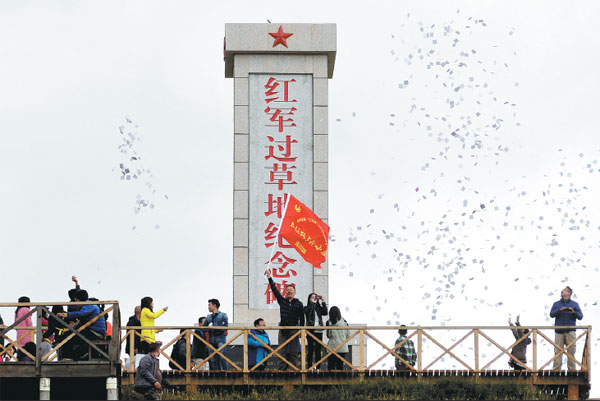


 |
|
Armed police rescue residents in Xiaxi village, Yutian town in East China's Jiangxi province on July 18, 2016.[Photo/IC] |
Spirit lives on
Compared with its march in physical space, China's development through ages deserves more attention.
The Communist Party of China was founded in 1921 and the People's Republic of China (PRC) was founded in 1949. The Long March (1934-1936) by the Red Army happened in between. And the middle point between China's reform and opening-up in 1978 and its goal to become a modern prosperous country in 2049 was the 18th National Congress of CPC that was held in 2013. So, now is the starting point of a new expedition.
Shortly before the founding of the PRC, Mao Zedong even said that taking control of the whole country was only the first step in the long march for the Chinese people. Today's China is still on its path of further reforms and development.
Luckily, the Red Army's Long March in the early 1930s has left a legacy that continues to resonate with generation after generation. Whether it is revolutionary period or development era, whether it is age of innovation or rebuilding after natural disasters, the Chinese people have shown time and again their determination, persistence and tenacity – all qualities that can be traced back to the spirit of the Long March.
 |
|
A group of journalists hold a memorial ceremony at a Long March monument in Hongyuan county, Sichuan province, on Sept 13. The group was invited by China's internet watchdog to retrace the route of the Red Army’s 12,500km Long March. [Photo by Hua Xiaofeng/For China Daily] |
Nation's cultural symbol
What the Long March means to modern China can be understood by the central role it plays in China's traditional values.
On the one hand, it's a historical milestone that marks the severe struggle the Communist Party of China, then just 15 years old, faced during the Long March.
On the other hand, it carries on cultural significance, representing Chinese people's indomitable spirit.
The Long March 80 years on has become a core cultural symbol. Many streets in various places of China are named after the epic journey. "New Long March" has become another term for China's reforms, governance and poverty-alleviation attempts.
Many people, including many foreigners, nowadays retrace the route of Long March to get inspiration from Red Army soldiers' brilliance, sacrifice and fighting spirit in face of daunting difficulties.
As President Xi Jinping has said, the Long March is ongoing, and every generation should win the battle.
Zhang Xingjian contributed to this story.
